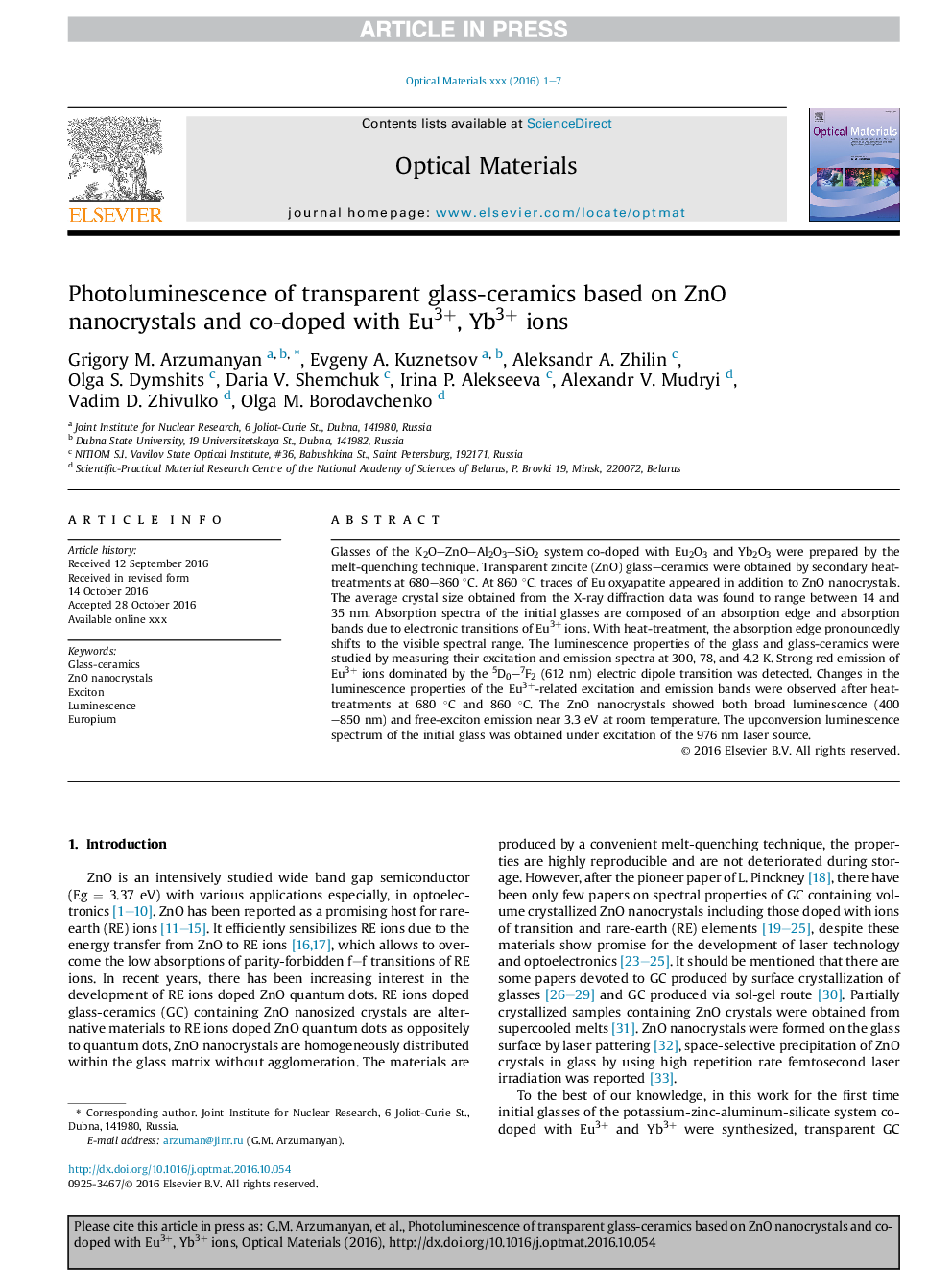| Article ID | Journal | Published Year | Pages | File Type |
|---|---|---|---|---|
| 5443095 | Optical Materials | 2016 | 7 Pages |
Abstract
Glasses of the K2OZnOAl2O3SiO2 system co-doped with Eu2O3 and Yb2O3 were prepared by the melt-quenching technique. Transparent zincite (ZnO) glass-ceramics were obtained by secondary heat-treatments at 680-860 °C. At 860 °C, traces of Eu oxyapatite appeared in addition to ZnO nanocrystals. The average crystal size obtained from the X-ray diffraction data was found to range between 14 and 35 nm. Absorption spectra of the initial glasses are composed of an absorption edge and absorption bands due to electronic transitions of Eu3+ ions. With heat-treatment, the absorption edge pronouncedly shifts to the visible spectral range. The luminescence properties of the glass and glass-ceramics were studied by measuring their excitation and emission spectra at 300, 78, and 4.2 K. Strong red emission of Eu3+ ions dominated by the 5D0-7F2 (612 nm) electric dipole transition was detected. Changes in the luminescence properties of the Eu3+-related excitation and emission bands were observed after heat-treatments at 680 °C and 860 °C. The ZnO nanocrystals showed both broad luminescence (400-850 nm) and free-exciton emission near 3.3 eV at room temperature. The upconversion luminescence spectrum of the initial glass was obtained under excitation of the 976 nm laser source.
Related Topics
Physical Sciences and Engineering
Materials Science
Ceramics and Composites
Authors
Grigory M. Arzumanyan, Evgeny A. Kuznetsov, Aleksandr A. Zhilin, Olga S. Dymshits, Daria V. Shemchuk, Irina P. Alekseeva, Alexandr V. Mudryi, Vadim D. Zhivulko, Olga M. Borodavchenko,
